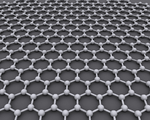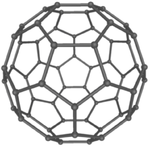Difference between revisions of "Carbon"
| Line 1: | Line 1: | ||
| + | ==Key Stage 2== | ||
| + | ===Meaning=== | ||
| + | [[Carbon]] is a [[chemical]] that makes [[diamond]]s and [[graphite]]. | ||
| + | |||
==Key Stage 3== | ==Key Stage 3== | ||
===Meaning=== | ===Meaning=== | ||
| − | [[Carbon]] is | + | [[Carbon]] is a [[non-metal]] [[element]] with an [[Atomic Number|atomic number]] of 6. |
===About Carbon=== | ===About Carbon=== | ||
| − | : [[Carbon]] is [[solid]] at [[ | + | ====Molecular Structure==== |
| + | : [[Carbon]] has the [[Chemical Symbol|chemical symbol]] [[Carbon|C]]. | ||
| + | ====Atomic Structure==== | ||
| + | : [[Carbon]] has 6 [[proton]]s and 6 [[neutron]]s in its [[Atomic Nucleus|nucleus]] giving it an [[Atomic Number|atomic number]] of 6 and a [[Relative Atomic Mass|atomic mass]] of 12. | ||
| + | : [[Carbon]] is in [[Period]] 2 of the [[Periodic Table]] because it has 2 [[Electron Orbital|electron shells]]. | ||
| + | ====Properties==== | ||
| + | : [[Carbon]] is [[solid]] at [[STP|room temperature]]. | ||
: [[Carbon]] can form [[graphite]] or [[diamond]]. | : [[Carbon]] can form [[graphite]] or [[diamond]]. | ||
==Key Stage 4== | ==Key Stage 4== | ||
===Meaning=== | ===Meaning=== | ||
| − | [[Carbon]] is | + | [[Carbon]] is a [[non-metal]] [[element]], on the [[Periodic Table]] with 6 [[proton]]s in the [[Atomic Nucleus|nucleus]]. |
===About Carbon=== | ===About Carbon=== | ||
| − | : | + | ====Molecular Structure==== |
| − | : [[Carbon]] | + | : [[Carbon]] has the [[Chemical Symbol|chemical symbol]] [[Carbon|C]]. |
| + | : [[Carbon]] forms [[Covalent Bond|covalent bonds]] with other [[Carbon]] [[atom]]s to produce a [[Giant Covalent Structure|giant covalent structure]]. | ||
: [[Carbon]] is able to make long chains of [[atom]]s to produce [[compound]]s called [[polymer]]s. | : [[Carbon]] is able to make long chains of [[atom]]s to produce [[compound]]s called [[polymer]]s. | ||
There are several [[allotrope]]s of [[Carbon]] including: | There are several [[allotrope]]s of [[Carbon]] including: | ||
| Line 34: | Line 45: | ||
| style="height:20px; width:150px; text-align:center;" |[[Fullerene]]s have a [[Giant Covalent Structure|giant covalent structure]] where each [[Carbon]] [[atom]] has 3 bonds with [[adjacent]] [[atom]]s forming a [[sphere]]. | | style="height:20px; width:150px; text-align:center;" |[[Fullerene]]s have a [[Giant Covalent Structure|giant covalent structure]] where each [[Carbon]] [[atom]] has 3 bonds with [[adjacent]] [[atom]]s forming a [[sphere]]. | ||
|} | |} | ||
| + | ====Atomic Structure==== | ||
| + | : The most common [[isotope]] of [[carbon]] is [[Carbon-12]] which has 6 [[proton]]s and 6 [[neutron]]s in the [[Atomic Nucleus|nucleus]]. | ||
| + | : [[Carbon]] is in [[Period]] 2 of the [[Periodic Table]] because it has 2 [[Electron Orbital|electron shells]]. | ||
| + | : [[Carbon]] has 4 [[electron]]s in its [[Outer Shell|outer shell]] so it can form 4 [[bond]]s with other [[atom]]s. | ||
| + | ====Properties==== | ||
| + | : [[Carbon]] is [[solid]] at [[STP|room temperature]]. | ||
| + | : The different [[allotropes]] have different [[Melting Point|melting points]] and different [[Electrical Conductivity|electrical conductivity]]. | ||
Revision as of 20:52, 1 April 2019
Contents
Key Stage 2
Meaning
Carbon is a chemical that makes diamonds and graphite.
Key Stage 3
Meaning
Carbon is a non-metal element with an atomic number of 6.
About Carbon
Molecular Structure
- Carbon has the chemical symbol C.
Atomic Structure
- Carbon has 6 protons and 6 neutrons in its nucleus giving it an atomic number of 6 and a atomic mass of 12.
- Carbon is in Period 2 of the Periodic Table because it has 2 electron shells.
Properties
Key Stage 4
Meaning
Carbon is a non-metal element, on the Periodic Table with 6 protons in the nucleus.
About Carbon
Molecular Structure
- Carbon has the chemical symbol C.
- Carbon forms covalent bonds with other Carbon atoms to produce a giant covalent structure.
- Carbon is able to make long chains of atoms to produce compounds called polymers.
There are several allotropes of Carbon including:
Examples
| Diamond is a giant covalent structure where each Carbon atom has 4 bonds with adjacent atoms. | Graphite has a giant covalent structure with each Carbon atom has 3 bonds with adjacent atoms in a layer with loose bonds between the layers. | Graphene has a giant covalent structure where each Carbon atom has 3 bonds with adjacent atoms forming a layer that is one atom thick. | Fullerenes have a giant covalent structure where each Carbon atom has 3 bonds with adjacent atoms forming a sphere. |
Atomic Structure
- The most common isotope of carbon is Carbon-12 which has 6 protons and 6 neutrons in the nucleus.
- Carbon is in Period 2 of the Periodic Table because it has 2 electron shells.
- Carbon has 4 electrons in its outer shell so it can form 4 bonds with other atoms.
Properties
- Carbon is solid at room temperature.
- The different allotropes have different melting points and different electrical conductivity.



